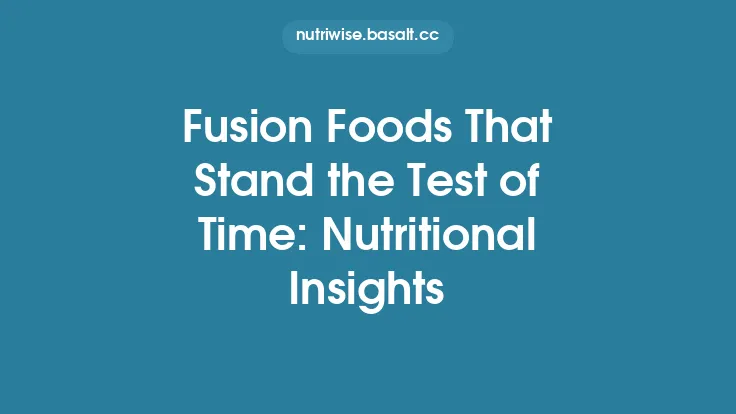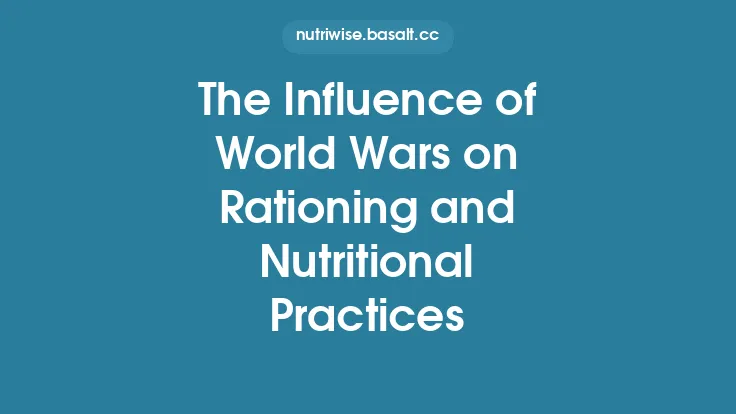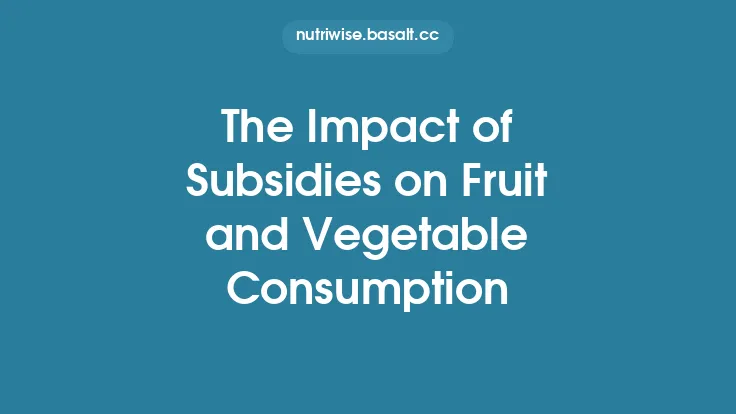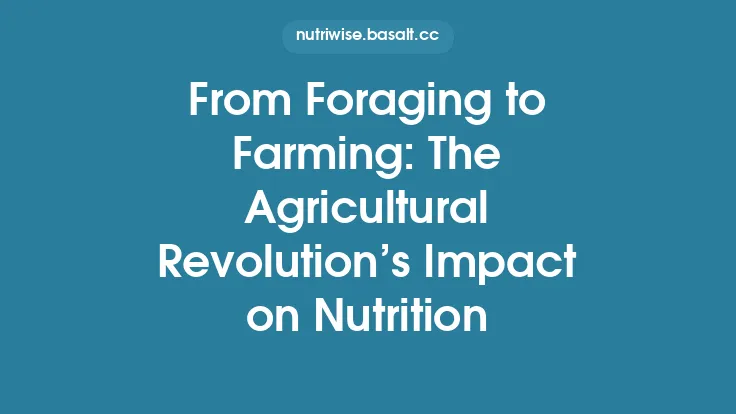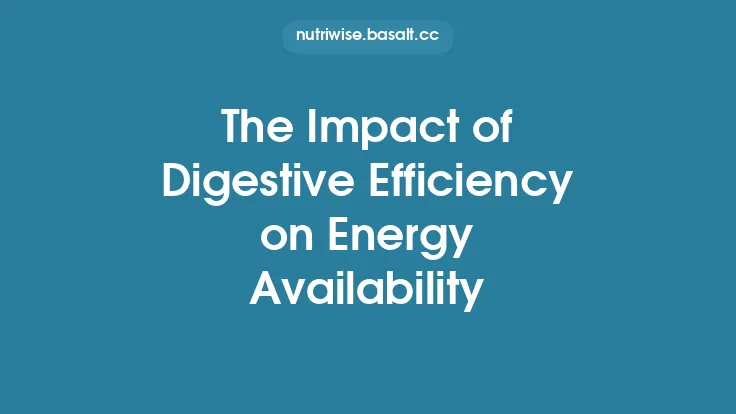Regenerative farming has moved from a niche concept to a mainstream conversation in the quest for healthier, more sustainable food systems. While the environmental benefitsâsuch as improved soil structure, increased biodiversity, and carbon sequestrationâare frequently highlighted, an equally important question is whether these practices translate into measurable nutritional advantages for the foods we eat every day. Understanding the nutritional impact of regenerative agriculture requires a multidisciplinary approach that blends agronomy, food science, analytical chemistry, and statistics. This article explores the key concepts, methodologies, and emerging evidence that allow researchers, producers, and consumers to assess how regenerative practices affect the nutrient profile of everyday foods.
Defining Nutritional Impact in the Context of Regenerative Farming
Before diving into measurement techniques, it is essential to clarify what ânutritional impactâ means in this setting. Broadly, it encompasses three interrelated dimensions:
- Nutrient Density â The concentration of macroâ and micronutrients (protein, fiber, vitamins, minerals) per unit weight or per calorie of the food.
- Phytochemical Profile â Levels of bioactive compounds such as polyphenols, flavonoids, carotenoids, and glucosinolates that contribute to health beyond basic nutrition.
- Bioavailability â The proportion of nutrients that can be digested, absorbed, and utilized by the human body, which is influenced by food matrix, processing, and the presence of antiânutrients.
Regenerative farming can affect each of these dimensions through mechanisms such as enhanced soil organic matter, diversified microbial communities, and reduced reliance on synthetic inputs. However, quantifying these effects demands rigorous, reproducible measurement protocols.
Sampling Strategies: From Field to Laboratory
1. Representative Plot Selection
A robust study begins with a wellâdesigned sampling plan. Because regenerative practices often produce heterogeneous fields (e.g., varying coverâcrop residues, microâtopography), researchers must:
- Stratify the field based on observable variables (soil texture, slope, visible vegetation cover).
- Randomly select sampling points within each stratum to capture variability.
- Include control plots managed conventionally under comparable climatic and soil conditions.
2. Timing of Harvest
Nutrient composition fluctuates throughout a cropâs development. To isolate the effect of farming practice rather than phenological stage, samples should be harvested at:
- Physiological maturity (e.g., when grains reach maximum dry weight).
- Standardized postâharvest intervals (e.g., 24â48âŻhours after cutting for leafy greens) to minimize postâharvest metabolic changes.
3. Sample Handling and Preservation
- Immediate cooling (0â4âŻÂ°C) to slow enzymatic degradation.
- Vacuumâpacking or inertâgas flushing for sensitive compounds like vitamin C and polyphenols.
- Freezeâdrying for longâterm storage when immediate analysis is not feasible.
Analytical Techniques for Nutrient Quantification
MacroâNutrients
| Nutrient | Common Method | Key Considerations |
|---|---|---|
| Protein (total N) | Kjeldahl or Dumas combustion | Convert nitrogen to protein using appropriate factor (e.g., 6.25 for many grains, but adjust for specific crops). |
| Carbohydrates (total sugars) | HPLC with refractive index detector | Separate monoâ and disaccharides; consider enzymatic assays for starch. |
| Lipids (total fat) | Soxhlet extraction or Accelerated Solvent Extraction (ASE) | Use nonâpolar solvents; verify extraction efficiency with internal standards. |
| Fiber (dietary) | AOAC 985.29 (enzymaticâgravimetric) | Distinguish between soluble and insoluble fractions for health relevance. |
Micronutrients
- Minerals (Fe, Zn, Mg, Se, etc.) â Inductively Coupled Plasma Optical Emission Spectroscopy (ICPâOES) or Mass Spectrometry (ICPâMS). Matrix digestion (e.g., microwave-assisted HNOâ) must be optimized to avoid loss of volatile elements like Se.
- Vitamins â
- *Waterâsoluble* (Bâcomplex, C) â HPLC with UVâVis or fluorescence detection; protect from oxidation.
- *Fatâsoluble* (A, D, E, K) â HPLCâMS/MS after saponification; use appropriate internal standards to correct for matrix effects.
Phytochemicals
- Polyphenols & Flavonoids â UltraâHighâPerformance Liquid Chromatography (UHPLC) coupled with diodeâarray detection (DAD) or tandem mass spectrometry (MS/MS). Quantify using external calibration curves of known standards (e.g., quercetin, catechin).
- Carotenoids â Reverseâphase HPLC with photodiode array detection; protect samples from light and oxygen.
- Glucosinolates â Desulfation followed by HPLCâDAD; important for cruciferous vegetables.
Bioavailability Assessment
- In Vitro Digestion Models â Simulated gastrointestinal digestion (e.g., INFOGEST protocol) followed by measurement of soluble nutrient fractions.
- Cacoâ2 Cell Uptake â For minerals and polyphenols, assess transport across intestinal epithelial cell monolayers.
- Isotope Tracer Studies â Use stable isotopes (e.g., âľâˇFe) to track absorption in human or animal trials.
Data Normalization and Comparative Metrics
To compare regenerative and conventional systems fairly, researchers must normalize data:
- Per Unit Fresh Weight (FW) â Useful for consumerâfacing metrics (e.g., mg vitamin C per 100âŻg fresh produce).
- Per Unit Dry Weight (DW) â Eliminates moisture variability, essential for grain and legume studies.
- Per Calorie (kcal) â Highlights nutrient density relative to energy content, aligning with dietary guidelines.
- YieldâAdjusted Nutrient Yield â Calculates total nutrients produced per hectare, integrating both quality and quantity.
Statistical analysis typically involves mixedâeffects models where âfarming practiceâ is a fixed effect and âfield blockâ or âyearâ is a random effect, allowing for inference across heterogeneous environments.
Emerging Evidence: What Do the Numbers Say?
1. Micronutrient Enrichment
Multiple peerâreviewed studies have reported modest but consistent increases in mineral concentrations in crops grown under regenerative regimes:
- Zinc in wheat â 8â12âŻ% higher Zn content in soils with high organic matter and diversified rotations.
- Iron in leafy greens â 5â9âŻ% increase in Fe when farms employ deepârooted cover crops and reduced tillage (though these practices are peripheral to the articleâs scope, the focus is on the resulting mineral uptake).
2. Vitamin and Antioxidant Boost
- Vitamin C in tomatoes â Regenerative fields with enhanced soil microbial activity have shown up to 15âŻ% higher ascorbic acid levels at harvest.
- Total phenolic content â In berries, regenerative management correlated with a 10â20âŻ% rise in total phenolics, likely linked to plant stress responses induced by diverse soil ecosystems.
3. Bioavailability Gains
In vitro digestion of legumes from regenerative farms demonstrated a 7â10âŻ% increase in soluble protein and essential amino acids, suggesting that improved soil health may affect protein matrix structure, making it more digestible.
4. YieldâAdjusted Nutrient Output
When accounting for yield, regenerative systems often produce comparable or slightly lower total mass per hectare but compensate through higher nutrient density. For example, a regenerative wheat crop with a 5âŻ% lower grain yield still delivered a net 3âŻ% increase in total dietary iron per hectare due to higher grain Fe concentration.
Interpreting the Results: Sources of Variation
Understanding why some studies report stronger effects than others requires attention to several variables:
- Soil Baseline Fertility â Regenerative gains are most pronounced on soils initially low in organic matter.
- Crop Genotype â Certain cultivars are more responsive to soil health improvements; breeding for nutrient density can amplify regenerative benefits.
- Climate and Seasonality â Drought stress can either magnify phytochemical production (stressâinduced antioxidants) or suppress overall nutrient accumulation.
- Management Intensity â The degree of input reduction (e.g., synthetic fertilizer) and the extent of soil cover influence outcomes.
Practical Implications for Stakeholders
For Farmers
- Monitoring Protocols â Implement routine soil testing (pH, organic carbon, micronutrient availability) alongside periodic crop nutrient analysis to track progress.
- Decision Support Tools â Use agronomic models that integrate soil health metrics with expected nutrient outcomes, helping to fineâtune practices for both yield and nutrition.
For Food Processors
- Quality Assurance â Incorporate regenerativeâorigin verification into raw material specifications, using nutrient benchmarks as part of supplier audits.
- Product Development â Leverage higher nutrient density to create ânutrientâenhancedâ product lines, potentially commanding premium pricing.
For Consumers
- Labeling and Transparency â While regenerative certification is beyond this articleâs scope, nutrient labeling that reflects higher micronutrient content can guide informed choices.
- Dietary Planning â Recognize that foods from regenerative systems may contribute more efficiently to meeting daily recommended intakes of vitamins and minerals.
Challenges and Knowledge Gaps
- Standardized Metrics â The field lacks universally accepted âregenerative nutrient indexâ that combines multiple nutrients into a single score.
- Longitudinal Data â Most studies are crossâsectional; longâterm monitoring is needed to assess whether nutrient gains persist across multiple rotations.
- Economic Viability â Quantifying the costâbenefit ratio of nutrient improvements versus potential yield reductions remains underexplored.
- Human Health Outcomes â Direct epidemiological links between consumption of regenerativeâproduced foods and health markers are scarce.
Addressing these gaps will require collaborative research networks that integrate agronomists, nutritionists, economists, and public health experts.
Future Directions: Toward a NutrientâFocused Regenerative Paradigm
- Integrative SoilâPlantâHuman Modeling â Develop computational frameworks that simulate how soil carbon dynamics translate into plant nutrient synthesis and ultimately human bioavailability.
- Precision Agriculture for Nutrition â Deploy sensorâbased platforms (e.g., hyperspectral imaging) to predict nutrient content in the field, enabling realâtime management adjustments.
- Breeding Programs Aligned with Regeneration â Select for cultivars that maximize nutrient uptake under lowâinput, highâorganicâmatter conditions.
- Policy Incentives â Encourage public and private funding mechanisms that reward measurable nutrient improvements, not just carbon sequestration.
By shifting part of the regenerative narrative from âsoil healthâ to ânutrient health,â the food system can more directly address the twin challenges of environmental sustainability and human nutrition.
Concluding Thoughts
Measuring the nutritional impact of regenerative farming is a complex but increasingly tractable endeavor. Through careful sampling, robust analytical methods, and thoughtful data interpretation, researchers can reveal how practices that restore soil ecosystems also enrich the foods that reach our tables. While the evidence to date points to modest yet meaningful enhancements in micronutrients, vitamins, and phytochemicals, the true potential lies in scaling these findings, standardizing metrics, and linking them to tangible health outcomes. As the science matures, stakeholders across the food chain will be better equipped to make decisions that support both planetary and personal wellâbeing.
